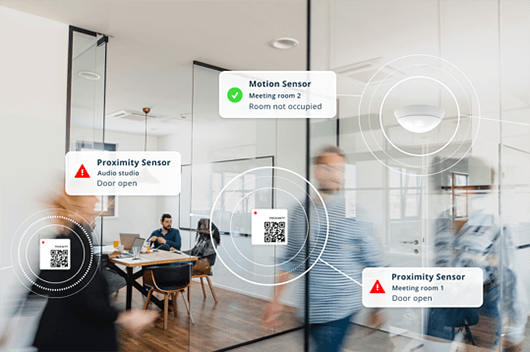Desk Occupancy Sensor: A Pathetic Sensor for Paranoid Managers
29-09-2022 | By Robin Mitchell
Recent product release reports show off the world’s smallest desk occupancy sensor claiming that it will help control environments and improve office efficiency, but in reality, such sensors will likely be used for petty managers tied to ageing mindsets. How can smart sensors help to improve internal spaces, what does the new sensor offer, and why do such sensors risk privacy?
How can smart sensors help to improve spaces?
With technological advances showing no signs of stopping, the ability for even the most basic devices to communicate over the internet provides engineers with numerous possibilities. One such area of interest is smart spaces, and while the industry is still in its infancy, there is no shortage of new solutions being developed on a daily basis.
But while engineers are rapidly turning out all kinds of sensor products, they are only as useful as the infrastructure that supports them. For example, an internet-connected thermostat may appear to be massively beneficial, but if it cannot be remotely controlled by an IoT platform capable of linking the state of the thermostat to other sensors and algorithms, then it is nothing more than an over-glorified remote-controlled thermostat.
However, if combined with other sensors, actuators, and interfaces, these IoT sensors can help to create smart spaces that can react to internal changes. For example, an IoT thermostat that connects to a central platform which also connects to door sensors, occupancy sensors, and live fuel tariffs, could make decisions as to which areas need to be heated and at what temperature to set the heating controls. This optimises internal conditions and can reduce heating costs and CO2 emissions.
Engineers are also actively looking at taking smart spaces to cover entire cities capable of adapting internal conditions to maximise efficiency. For example, environmental sensors that detect too much pollution in a particular area caused by traffic could adjust traffic lights to try and ease congestion, while smart motorways could potentially close off junctions to areas experiencing serious traffic delays.

The world’s smallest sensor for desk occupancy released
Recognising the advantages of sensors in smart spaces, Disruptive Technologies recently announced the release of their desk occupancy sensor, which has been claimed to be the world’s smallest. The sensor, which measures just 19x19x3.5mm, uses an adhesive backing to adhere it to the underside of a desk, and the use of temperature sensors combined with machine learning allows for the sensor to determine if the area is currently occupied.
The sensor can detect an individual’s presence within a 5-minute window and uses end-to-end encryption over 868MHz / 915MHz for communication with a range of 25 meters indoors and 100 meters outdoors. Interestingly, the new sensor has an 8-year life span, but the internal battery is not replaceable, and the sensor is housed in an IP68 casing, making it resistant to most dust and moisture.
Why do such sensors risk privacy?
While Disruptive Technologies suggests that their sensors can be used for better environmental controls (no doubt that this is possible), it is more than likely to be used by petty managers trying to catch out employees for supposedly not working. A small discrete sensor that will likely go unnoticed by most will allow managers to know the exact date and time when their employees are at their desks and could even be combined with a vibration/tap sensor for determining how often the employee’s keyboard is used.
While this will undoubtedly lead to pettiness and paranoia, it raises some serious privacy concerns. Arguably, the space inside an office is the sole property of the business owner where cameras and monitoring devices are permitted, but constantly monitoring individuals using discrete technology is borderline dangerous (even security cameras are rarely pointed at screens and keyboards to protect passwords and emails).
Another cause for concern for such sensors is businesses requesting such devices be present on desks for those who work from home without informing the employee of the sensor’s purpose. In fact, it wouldn’t be that difficult to affix such sensors to the back of monitors, chairs, or other equipment offered by the company. From there, the company would have occupancy data being generated in a private space, and this could be potentially used by criminals to determine if anyone is present in the room being monitored.
Finally, the small size and use of the internal battery present the same challenges as seen by Apple AirTags. They can easily be mounted under the hood of a vehicle, slipped into a bag, or even placed in a pocket. As these sensors do not announce their location to the world on frequencies that can be picked up by common mobile devices, it would be hard to detect if being tracked.
Overall, desk occupancy sensors are just another tool for petty managers to track their employees, and the risk to privacy raises serious questions on how and where these devices are used.

